Michael Benson’s Awe-Inspiring Views of the Solar System
A photographer painstakingly pieces together raw data collected by spacecraft to produce color-perfect images of the Sun, planets and their many moons
/https://tf-cmsv2-smithsonianmag-media.s3.amazonaws.com/filer/eb/64/eb647f6b-3711-4650-a133-0c9ab1975152/jupiter-io-michael-benson.jpg)
At the outset of both his new book, Planetfall, and his exhibition of the same title now at the Washington, D.C. headquarters of the American Association for the Advancement of Science, photographer Michael Benson defines the word “planetfall.” Planetfall, he states, is “the act or an instance of sighting a planet after a space voyage.”
It is really the existence, in the last 50 years, of spacecraft orbiting the planets of our solar system that has necessitated the term. “Each of these far-flung machines is following the traditions blazed by the great Earthbound explorers, but when its destination comes into view, we can no longer call that dramatic moment ‘landfall,’” according to the exhibition. “Hence ‘planetfall’—the moment of arrival at other worlds.”
In his latest series of images, Benson attempts to lift us off terra firma and bring this awe-inspiring moment to us. His 40 large-scale photographs, hanging in the AAAS Art Gallery, are remarkably crisp views of the rings of Saturn, moons in transit, a sunset on Mars and volcanic eruptions on Jupiter’s moon, Io, among other marvels. Each image is in “true color,” as Benson puts it.
To make his photographs, Benson starts by perusing through thousands of raw image data collected on missions led by NASA—Cassini, Galileo, MESSENGER, Viking and Voyager, among others—and the European Space Agency. He has compared this process to panning for gold—the precious gold nuggets being beautiful sequences of images, rarely seen by the public, that he can piece together into one seamless photograph. It can take anywhere from tens to hundreds of raw frames to arrange, like a mosaic, one legible composite image. Then rendering the photograph in realistic colors adds another layer of complexity. Benson describes the process in his book:
“In order for a full-color image to be created, the spacecraft needs to have taken at minimum two, but preferably three, individual photographs of a given subject, with each exposed through a different filter…. Ideally, those filters are red, green, and blue, in which case a composite image color image can usually be created without too much trouble…. If a red and a blue filtered shot are available but not a green, for example, a synthetic green image can be created by mixing the other two colors.”
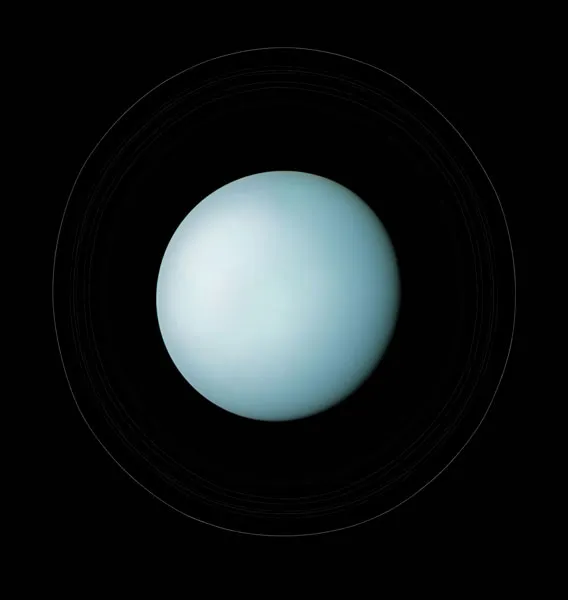
Some of the colors are quite striking. Jupiter’s moon, Io, is a brilliant yellow, in one of Benson’s photographs (shown at top). To me, it looks like a shiny bowling ball, whereas for Benson it calls to mind the yellow rim of Morning Glory Pool in Yellowstone National Park. “It’s all sulphur,” he says. Then, there is the photographer’s very modernist-looking portrait of Uranus (above) and its rings in a stunning robin’s egg blue, assembled from raw images taken by the Voyager spacecraft as it flew by the planet on January 24, 1986. Uranus’ rotation axis is roughly parallel to the plane of the solar system, making its rings vertical in this view. ”This is about as close, I believe, to what the human eye would see as it is possible to produce using existing data,” Benson explains.
The sights take some time to digest. At a recent preview of the AAAS exhibition, I watched as onlookers approached the photographs, oriented themselves with their subjects and tried to make sense of the shadows, streaks and gouges they saw. As TIME reported on its blog, LightBox, “Benson’s visions demand more than a single look; the longer one spends with his vast landscapes, considering the scale and scope, the more they facilitate a state of meditation.”
Meditate on these selections from Planetfall, on display at the AAAS Art Gallery through June 28, 2013.
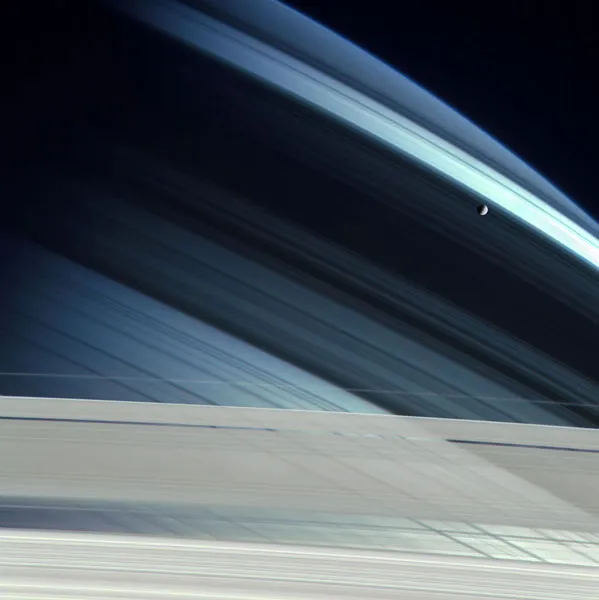
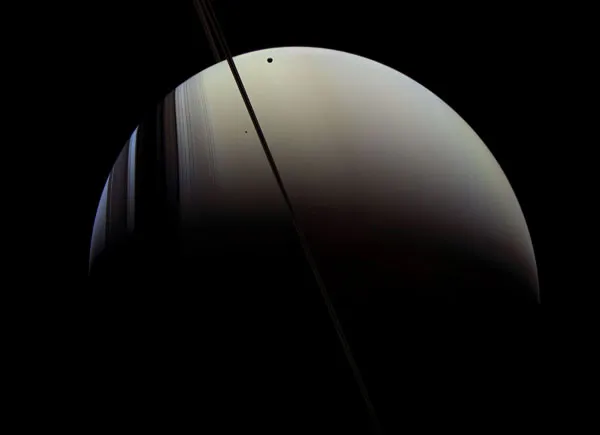
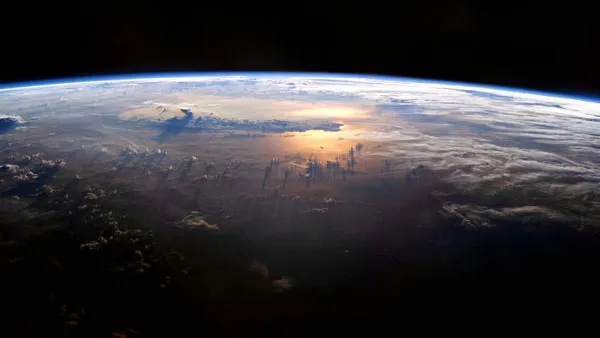
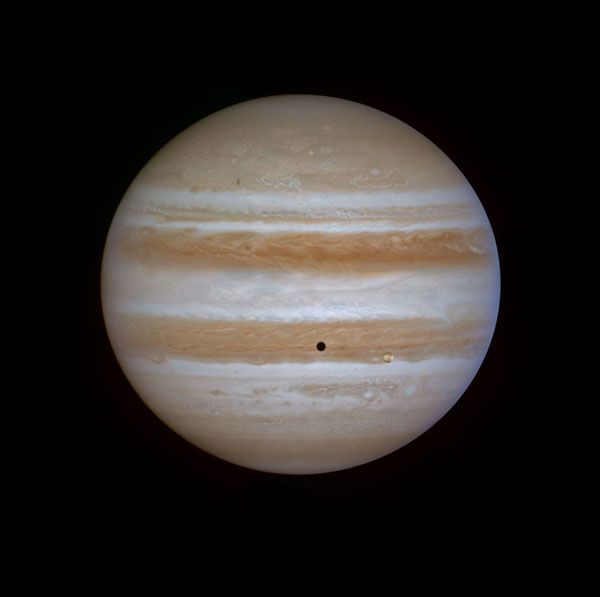
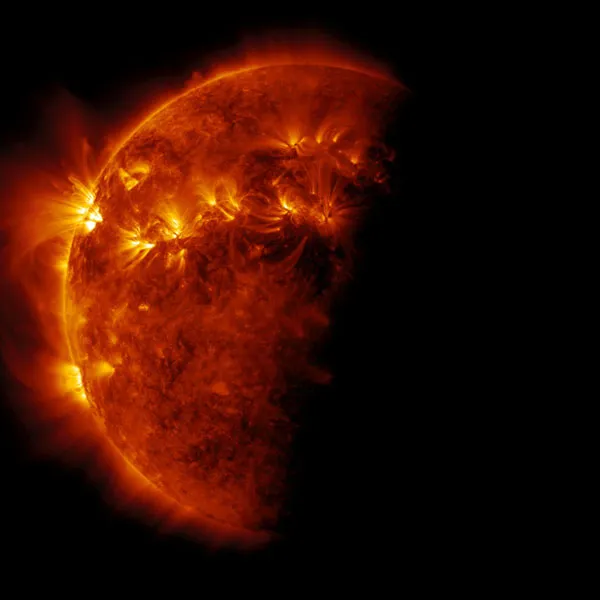
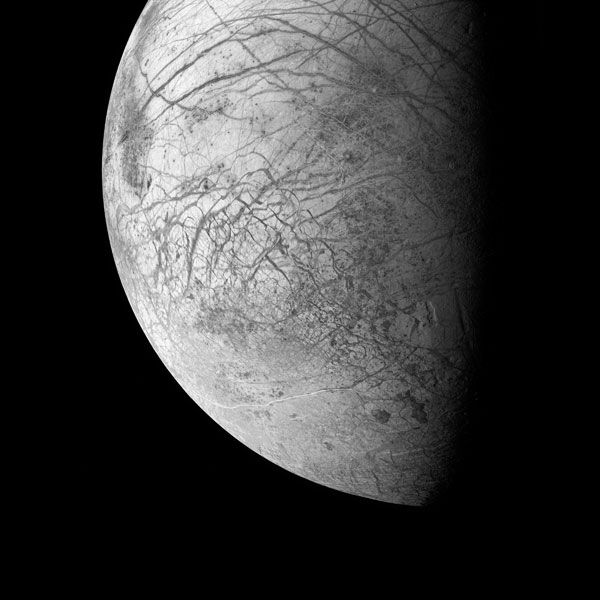
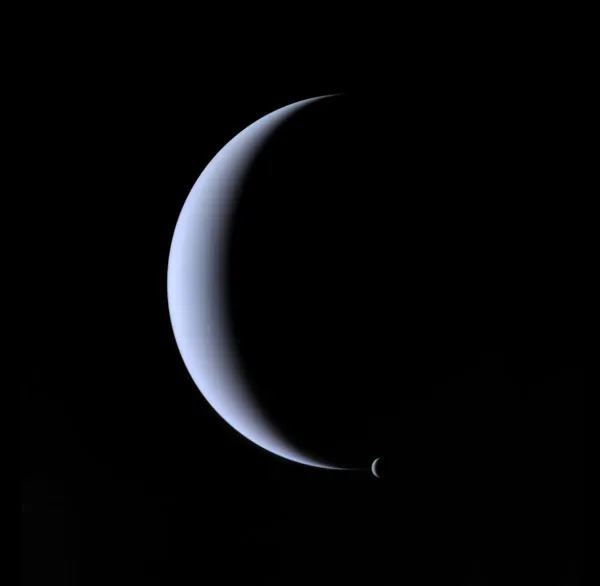
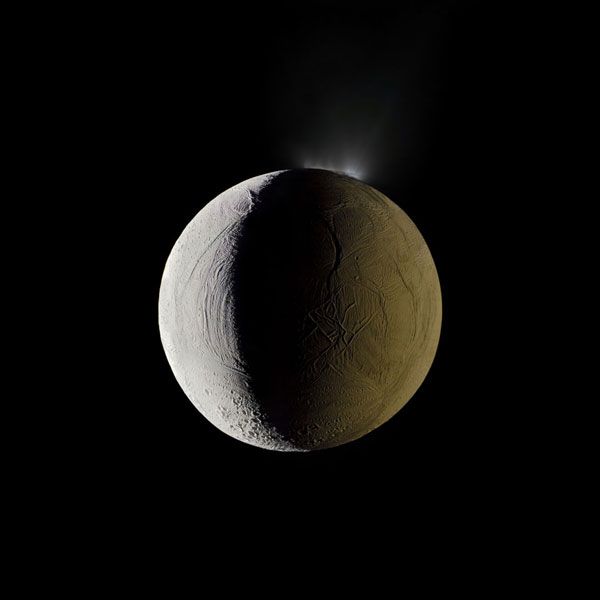
/https://tf-cmsv2-smithsonianmag-media.s3.amazonaws.com/accounts/headshot/megan.png)
/https://tf-cmsv2-smithsonianmag-media.s3.amazonaws.com/accounts/headshot/megan.png)